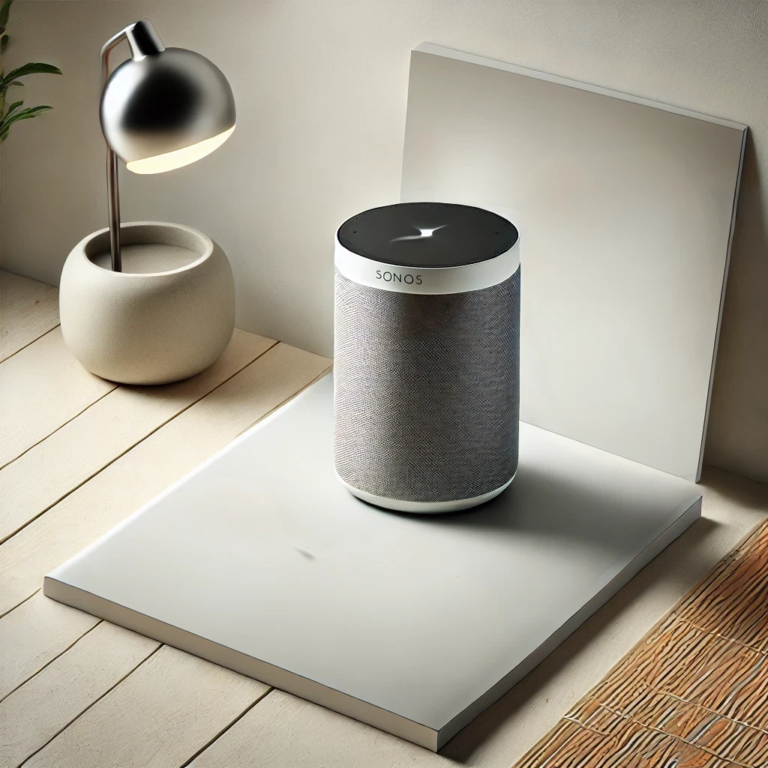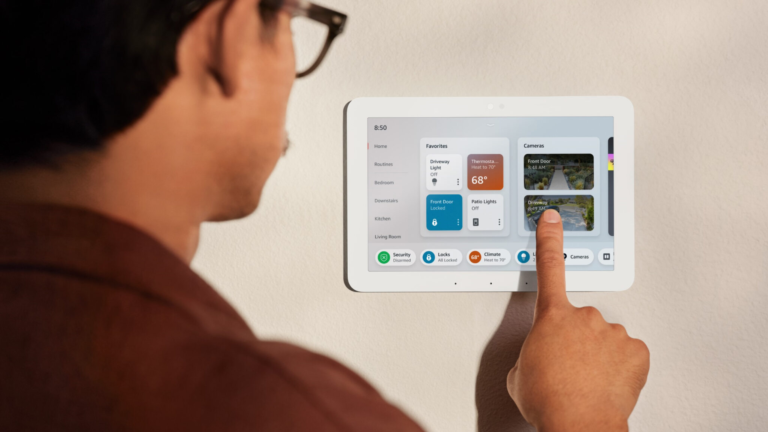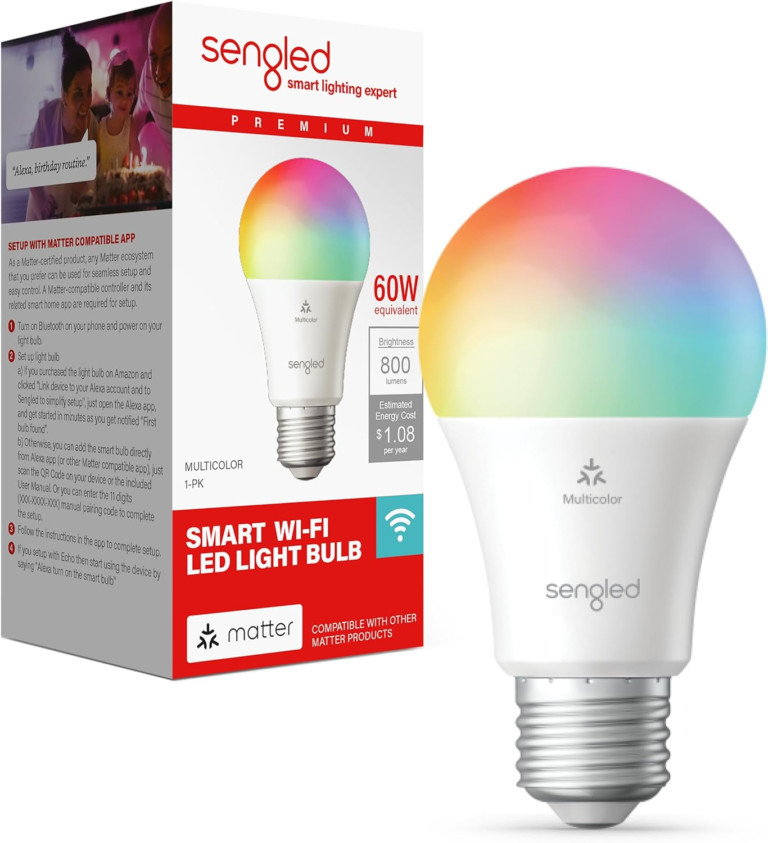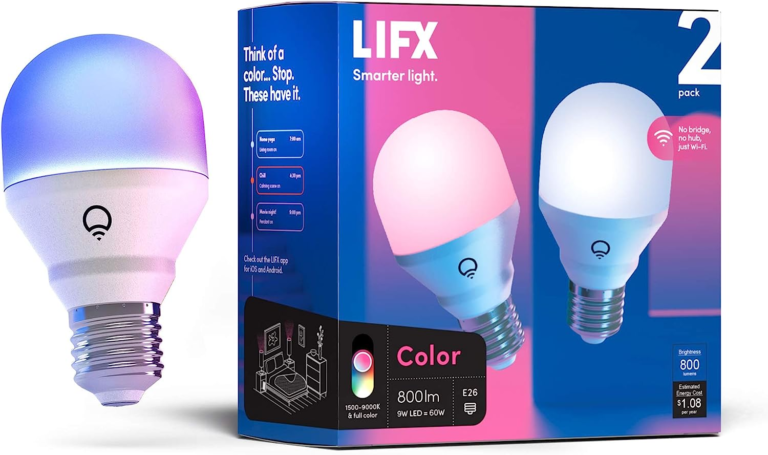Smart Locks in Rental Properties: Security Tips and Tenant Management Strategies

In the dynamic world of property management, staying ahead of the curve is essential for landlords and property owners looking to enhance security and streamline operations. Smart locks have emerged as a game-changer in the rental property industry, offering a blend of heightened security and unparalleled convenience.
In this blog post, we’ll delve into the realm of smart locks in rental properties, offering valuable security tips and effective tenant management strategies.
Understanding Smart Locks
Smart locks represent a modern evolution in access control technology, offering a seamless blend of security and convenience for residential properties. Unlike traditional locks that rely on physical keys, smart locks utilize wireless communication and digital authentication methods to grant access. Here are key aspects to consider

- Wireless Connectivity: Smart locks typically connect to a home’s Wi-Fi network or utilize Bluetooth technology to communicate with authorized devices such as smartphones or key fobs. This wireless connectivity allows for remote access control and monitoring, even when landlords or tenants are away from the property.
- Keyless Entry: One of the defining features of smart locks is their ability to provide keyless entry. Instead of fumbling for keys, users can unlock doors using a variety of methods such as smartphone apps, numeric keypads, fingerprint scanners, or even voice commands. This eliminates the need for physical keys and offers greater convenience and security.
- Remote Management: Smart locks enable remote management of access permissions, allowing landlords or property managers to grant or revoke access to tenants, guests, or service providers from anywhere with an internet connection. This feature is particularly valuable for rental properties, as it streamlines the process of key distribution and enhances security by eliminating the risk of lost or duplicated keys.
- Advanced Features: Beyond basic access control, many smart locks offer additional features such as activity logs, tamper alerts, and integration with smart home systems. Activity logs provide a detailed record of who entered or exited the property and when, enhancing security and accountability. Tamper alerts notify users of any unauthorized attempts to manipulate or break the lock. Integration with smart home systems allows for seamless automation and integration with other connected devices such as security cameras, lights, and thermostats.
- Security Protocols: Smart locks prioritize security through robust encryption algorithms and authentication protocols to prevent unauthorized access or hacking attempts. Most reputable smart lock manufacturers regularly release firmware updates to patch security vulnerabilities and improve overall system reliability.
Implications for Rental Properties
Integrating smart locks into rental properties brings forth several implications that landlords and property owners need to carefully consider:
- Enhanced Security: Smart locks offer advanced security features that can significantly enhance the safety of rental properties. With features such as encryption, tamper detection, and remote monitoring, smart locks provide robust protection against unauthorized access attempts. Landlords can have greater peace of mind knowing that their properties are secured with state-of-the-art technology.
- Convenience for Tenants: Smart locks introduce a new level of convenience for tenants by eliminating the need for physical keys. Tenants no longer have to worry about losing keys or getting locked out of their units. Instead, they can use their smartphones or personalized access codes to enter their homes effortlessly. This convenience can lead to higher tenant satisfaction and retention rates.
- Remote Management: Smart locks enable landlords and property managers to remotely manage access to rental units. Whether it’s granting temporary access to contractors for repairs or monitoring tenant turnover remotely, smart locks offer unparalleled flexibility and control. This remote management capability can streamline operations and reduce the need for physical key exchanges, especially in situations where landlords are not located onsite.
- Integration with Smart Home Systems: Smart locks can integrate seamlessly with other smart home devices and systems, creating a more connected and automated living environment. For example, landlords can integrate smart locks with security cameras to capture video footage of door entries or with smart thermostats to adjust temperature settings based on occupancy. This integration enhances overall efficiency and convenience for both landlords and tenants.
- Cost Considerations: While smart locks offer numerous benefits, landlords need to consider the initial investment and ongoing maintenance costs associated with these systems. Smart locks tend to be more expensive upfront compared to traditional locks, and they may require periodic battery replacements or software updates. However, many landlords find that the long-term benefits outweigh the initial costs, especially in terms of improved security and operational efficiency.
integrating smart locks into rental properties can enhance security, convenience, and operational efficiency. By carefully considering the implications and weighing the associated costs, landlords can make informed decisions about whether smart locks are the right choice for their rental properties.
Practical Tips for Landlords
Implementing smart locks in rental properties requires careful planning and execution to ensure optimal results. Here are some practical tips for landlords and property managers:
- Choose the Right Smart Lock System: Select a reputable smart lock system that aligns with your property’s specific needs and requirements. Consider factors such as compatibility with existing infrastructure, ease of installation, and robust security features. Look for smart locks that offer encryption, tamper detection, and remote access control capabilities.
- Educate Tenants: Provide clear instructions and training to tenants on how to use smart lock systems effectively and securely. Ensure that tenants understand how to operate the locks, set up access codes, and troubleshoot common issues. Encourage open communication and provide ongoing support to address any concerns or questions that may arise.
- Establish Access Control Policies: Develop clear protocols for granting and revoking access to rental units. Establish guidelines for issuing temporary access codes to contractors or service providers and ensure that tenants understand their responsibilities for safeguarding access credentials. Regularly review access logs to monitor for any unauthorized activity and take prompt action as needed.
- Enhance Cybersecurity Measures: Strengthen cybersecurity measures to protect smart lock systems from potential threats and vulnerabilities. Implement strong encryption protocols, use unique and complex passwords for administrative access, and regularly update firmware/software to patch any security vulnerabilities. Educate tenants on best practices for securing their smartphones and other devices that interact with the smart lock system.
- Stay Informed About Legal Regulations: Stay abreast of relevant legal regulations and guidelines governing the use of smart lock technology in rental properties. Familiarize yourself with tenant privacy rights, data protection laws, and local housing regulations to ensure compliance. Consult legal experts if necessary to ensure that your use of smart locks aligns with applicable laws and regulations.
By following these practical tips, landlords and property managers can effectively leverage smart lock technology to enhance security, streamline operations, and provide a positive rental experience for tenants.
Check out our Blog on How to Choose the Perfect Smart Lock for Your Home: A Comprehensive Guide

Compliance and Legal Considerations
Integrating smart locks into rental properties comes with various compliance and legal considerations that landlords must navigate to ensure they remain by relevant regulations and guidelines. Here are some key considerations:
- Tenant Privacy Rights: Landlords must respect the privacy rights of their tenants when implementing smart lock technology. This includes obtaining informed consent from tenants regarding the collection and use of their personal data, such as access logs and activity history. Landlords should clearly communicate how tenant data will be stored, accessed, and protected to ensure compliance with privacy regulations.
- Data Protection Laws: Landlords must adhere to data protection laws and regulations governing the collection, storage, and processing of tenant data. This includes implementing appropriate security measures to safeguard sensitive information from unauthorized access or disclosure. Landlords should encrypt stored data, use secure authentication protocols, and regularly audit access logs to ensure compliance with data protection requirements.
- Local Housing Regulations: Landlords should familiarize themselves with local housing regulations and ordinances that may impact the use of smart lock technology in rental properties. Some jurisdictions may have specific requirements regarding access control systems, security measures, or tenant rights that landlords must adhere to. By staying informed about local regulations, landlords can avoid potential legal issues and ensure compliance with applicable laws.
- Tenant Notification and Consent: Landlords should provide tenants with clear information about the implementation of smart lock technology in their rental units. This includes notifying tenants of the types of data collected, the purposes for which it will be used, and any potential impact on their privacy or security. Landlords should obtain explicit consent from tenants before installing smart lock systems to ensure transparency and compliance with privacy regulations.
- Contractual Agreements: Landlords should review existing lease agreements and rental contracts to ensure they include provisions related to the use of smart lock technology. This may include clauses outlining the landlord’s responsibilities for maintaining and securing the smart lock system, as well as the tenant’s obligations for using the system responsibly. By incorporating smart lock provisions into lease agreements, landlords can clarify expectations and mitigate potential disputes.
By addressing these compliance and legal considerations proactively, landlords can ensure that their implementation of smart lock technology complies with relevant regulations and safeguards tenant rights and privacy.
Tenant Communication and Education
Effective communication and education are essential components of a successful implementation of smart lock technology in rental properties. Landlords and property managers should prioritize tenant engagement and provide comprehensive information to ensure a smooth transition to smart locks. Here’s how to effectively communicate and educate tenants about smart lock systems:
- Clear Communication: Start by clearly communicating with tenants about the introduction of smart lock technology in their rental units. Send out notifications via email, mail, or in-person meetings to inform tenants about the upcoming changes, explain the benefits of smart locks, and address any concerns or questions they may have.
- Educational Resources: Provide tenants with educational resources and materials to help them understand how smart lock systems work and how to use them effectively. This may include user manuals, instructional videos, or FAQ documents that outline the features and functionality of the smart locks and provide step-by-step guidance on setup and operation.
- Training Sessions: Consider hosting training sessions or workshops for tenants to learn firsthand how to use the smart lock systems. Invite representatives from the smart lock manufacturer or security professionals to demonstrate the features of the locks, answer questions, and address any technical issues or concerns.
- Tenant Support: Offer ongoing support and assistance to tenants as they transition to using smart lock systems. Establish dedicated channels, such as a helpline or email address, where tenants can reach out for help with setup, troubleshooting, or general inquiries. Ensure that tenants feel supported and empowered to use the smart locks confidently.
- Feedback Mechanism: Encourage tenants to provide feedback on their experience with the smart lock systems and use this input to identify areas for improvement and address any issues or concerns. Consider conducting surveys or focus groups to gather insights from tenants and use this feedback to enhance the overall tenant experience.
By prioritizing tenant communication and education, landlords and property managers can foster a positive and collaborative relationship with tenants and ensure a successful transition to smart lock technology in rental properties.
Maintenance and Upkeep Responsibilities
Integrating smart lock technology into rental properties requires ongoing maintenance and upkeep to ensure optimal performance and security. Landlords and property managers should establish regular maintenance routines and procedures to keep smart lock systems functioning smoothly. Here are key maintenance and upkeep responsibilities to consider:
- Regular Inspections: Conduct regular inspections of smart lock systems to check for signs of wear and tear, damage, or malfunction. Inspect the physical components of the locks, including the lock mechanism, keypad or touchscreen, batteries, and connectivity modules. Look for any loose screws, damaged keypads, or worn-out components that may affect the performance of the locks.
- Battery Replacement: Smart lock systems are typically battery-powered, so it’s essential to monitor battery levels and replace batteries as needed. Set up a schedule for battery replacement based on the manufacturer’s recommendations and the expected battery life of the locks. Ensure that tenants are aware of their responsibility to replace batteries and provide clear instructions on how to do so.
- Software Updates: Stay up to date with software updates and firmware upgrades released by the smart lock manufacturer. These updates often include bug fixes, security patches, and new features that can improve the performance and security of the locks. Schedule regular software updates to ensure that smart lock systems are running the latest version of the software.
- Security Audits: Conduct periodic security audits of smart lock systems to identify and address any potential vulnerabilities or security risks. Test the locks for susceptibility to hacking or unauthorized access attempts and implement additional security measures as needed. Work with cybersecurity experts or professional locksmiths to assess the security posture of smart lock systems and implement best practices for securing them.
- Tenant Training and Support: Provide ongoing training and support to tenants on how to use smart lock systems effectively and responsibly. Address any questions or concerns tenants may have about the maintenance and upkeep of the locks and provide assistance with battery replacement or troubleshooting as needed. Ensure that tenants have access to resources and support channels for reporting any issues or requesting assistance with smart lock systems.
By prioritizing maintenance and upkeep responsibilities, landlords and property managers can ensure that smart lock systems remain reliable, secure, and functional throughout their lifespan. Regular maintenance routines, battery replacement schedules, software updates, security audits, and tenant training are essential components of a comprehensive maintenance strategy for smart lock systems in rental properties.
Embracing the Future of Rental Property Security
Smart lock technology has revolutionized access control in rental properties, offering a blend of security, convenience, and efficiency that traditional lock systems cannot match. By leveraging smart locks effectively, landlords and property managers can enhance security measures, streamline operations, and provide a positive rental experience for tenants.
Throughout this blog post, we’ve explored the various aspects of integrating smart locks into rental properties, from understanding the technology and its implications to practical tips for implementation and compliance considerations. Here are the key takeaways:
- Enhanced Security: Smart locks offer advanced security features such as encryption, remote monitoring, and tamper detection, reducing the risk of unauthorized access and break-ins in rental properties.
- Convenience for Tenants: Smart locks provide tenants with keyless entry options, remote access control, and integration with smart home systems, enhancing convenience and flexibility in accessing their rental units.
- Streamlined Operations: Smart locks streamline property management tasks such as key distribution, tenant turnover, and maintenance requests, saving time and reducing administrative overhead for landlords and property managers.
- Compliance and Legal Considerations: Landlords must navigate compliance and legal considerations related to tenant privacy rights, data protection laws, and local housing regulations when implementing smart lock technology in rental properties.
- Tenant Communication and Education: Effective communication and education are essential for ensuring a smooth transition to smart lock systems for tenants. Landlords should provide comprehensive information, training, and ongoing support to empower tenants to use the technology confidently.
- Maintenance and Upkeep Responsibilities: Regular maintenance and upkeep of smart lock systems are crucial for ensuring optimal performance and reliability. Landlords should conduct inspections, replace batteries, install software updates, and troubleshoot technical issues to keep the locks functioning smoothly.
FAQ: Choosing the Perfect Smart Lock for Your Home
Q: Is the smart lock compatible with my existing door and lock setup?
A: Absolutely crucial! Ensure compatibility by measuring the backset of your door, which is the distance from the edge of the door to the center of the lock bore hole. This often-overlooked detail can save you from installation headaches and ensure a snug fit for your new smart lock. Additionally, consider factors such as door thickness and whether your door swings in or out, as these can also impact compatibility.
Q: How secure is the smart lock compared to traditional locks? What encryption methods does it use?
A: While many smart locks boast about their security features, it’s essential to look beyond the marketing hype. Consider internal reinforcement against physical tampering, such as hardened steel construction or additional locking bolts. Anti-drill shields are also crucial to provide added defense against intruders attempting to bypass electronic security measures. Additionally, inquire about the encryption methods used to protect communication between the lock and your smartphone or hub. Look for locks that utilize advanced encryption standards like AES-256 for maximum security.
Q: Can the smart lock be integrated with other smart home devices or systems, like my security system or virtual assistant?
A: Seamless integration with your existing smart home ecosystem can enhance convenience and functionality. While many smart locks advertise compatibility with popular platforms like Amazon Alexa or Google Assistant, consider looking for locks that also support lesser-known but increasingly popular platforms like Apple HomeKit or Z-Wave. This broader compatibility can future-proof your smart home setup and ensure compatibility with a wider range of devices down the line.
Q: Is the installation process straightforward, or will I need professional assistance? Can I do it myself?
A: Pay close attention to the lock’s mounting mechanism and ensure it aligns with your door’s construction. Look for locks that offer straightforward installation guides and compatibility with standard door preparations. However, if you’re unsure about your DIY skills or have a non-standard door configuration, it’s always best to consult a professional locksmith or handyman to ensure proper installation. Some smart locks also offer optional professional installation services for added peace of mind.
Q: What additional features does the smart lock offer in terms of convenience, such as remote access via smartphone or keyless entry options?
A: Beyond the standard remote access and keyless entry features, explore advanced functionalities that can truly elevate the user experience. Look for features like geofencing, which automatically unlocks the door when you approach your home, or temporary access codes that you can share with trusted individuals for limited periods. Biometric authentication options, such as fingerprint or facial recognition, offer added security and convenience. Additionally, some smart locks integrate with home automation systems, allowing you to create custom routines or trigger actions based on lock activity, such as turning on lights when the door is unlocked. These innovative features can add an extra layer of convenience and security to your smart lock setup, making your home truly smarter and safer.
In conclusion, smart lock technology offers numerous benefits for landlords, property managers, and tenants alike. By embracing innovation and leveraging smart lock systems effectively, landlords can create safer, more efficient, and more convenient rental properties that meet the evolving needs of today’s tenants.

Dyson Pure Cool Review: The Smart Air Purifier You Need
It’s really important to keep the air we breathe at home clean and healthy, don’t you think? The Dyson Pure Cool smart air purifier is designed to ensure that the air in your home is of the highest quality. It uses advanced technology to remove impurities and keep the air fresh and clean. So, you…

Sonos One Review: The Ultimate Smart Speaker for Music Lovers
Sonos One is this amazing smart speaker that totally rocks! It’s designed to give you top-notch sound and play really nicely with all your smart home gadgets. Whether you’re a music buff or need a solid speaker, Sonos One is there to take your listening game to the next level. In my review, we’ll dig…

Google Nest Hub Review: Your Ultimate Smart Home Assistant
The Google Nest Hub is an advanced smart display incorporating Google Assistant and a user-friendly touchscreen interface. This innovative device seamlessly integrates with various smart home devices, allowing for comprehensive control and monitoring. In addition, it provides detailed and real-time weather updates and offers a wide array of entertainment options, making it an essential addition…

Review of the Amazon Echo Show 8: An Ideal Smart Display Solution for Your Home
The Amazon Echo Show 8 is a versatile smart display that combines the power of Alexa with a vibrant HD screen, making it an ideal addition to any modern home. Whether you want to control your smart home devices, make video calls, or enjoy multimedia content, the Echo Show 8 promises to deliver a seamless…

Sengled Smart Bulb Review: A Smart Choice for Your Home Lighting Needs
Smart lighting is essential to modern homes, providing convenience, energy savings, and enhanced ambiance. Sengled, a renowned name in the smart lighting industry, offers an impressive range of smart bulbs. The Sengled Smart Bulb promises to deliver quality, functionality, and affordability. But is it the right choice for your home? Why Choose Sengled Smart Bulb?…

LIFX A19 Smart LED Light Bulb Review: Is It the Right Choice for Your Home?
Introduction Smart lighting is really changing the way we think about home automation. LIFX, a company known for its innovative and high-quality products, is leading the charge in this space. Their flagship offering, the LIFX A19 Smart LED Light Bulb, promises to bring vibrant color, exceptional brightness, and smart functionality to your home. But is…





